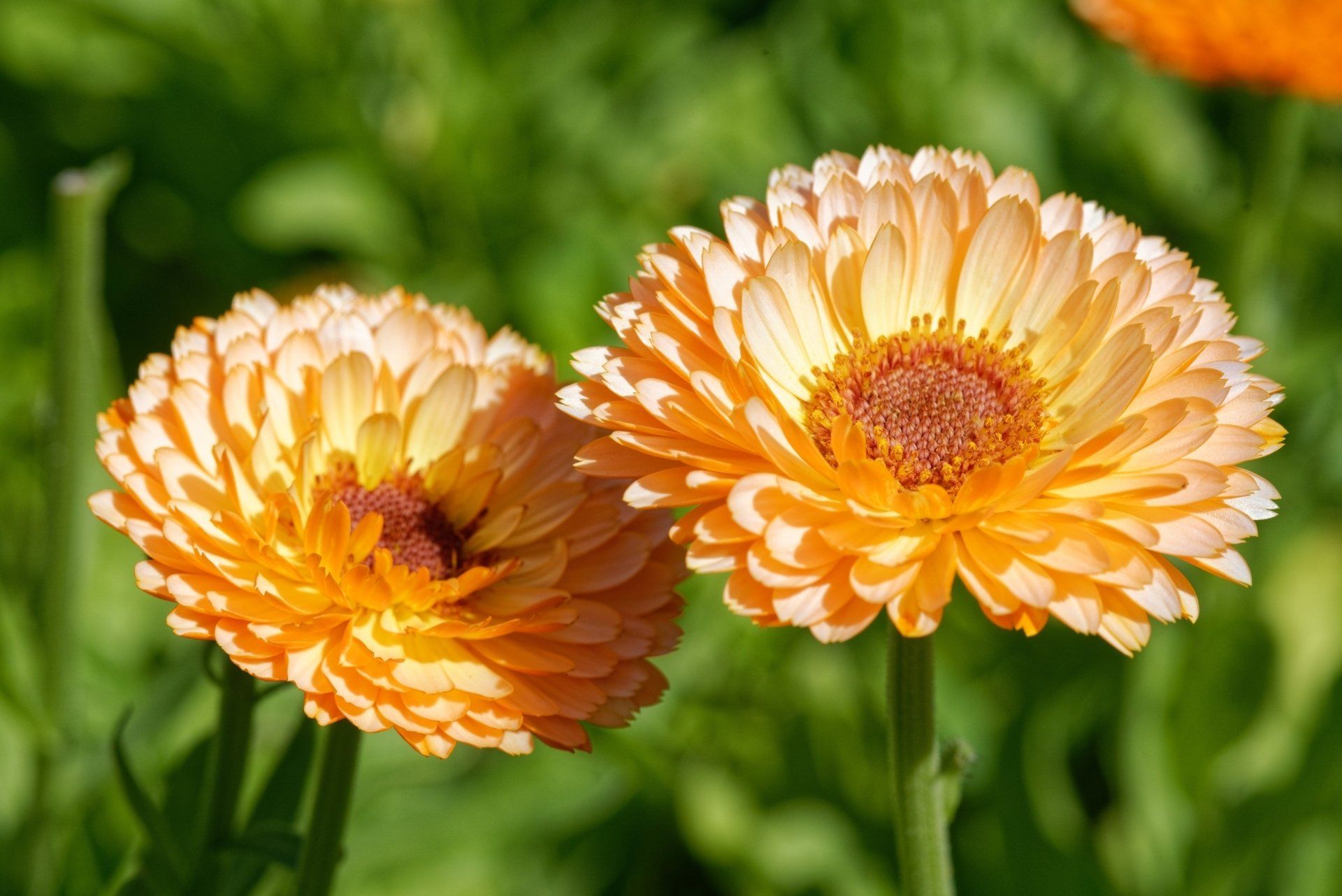Calendula
KEY INFORMATION
Height: to 70cm
Spread: to 45cm
Hardy annual
Sun or semi-shade
Germination: 5 - 10 days
VARIETIES AVAILABLE FROM COLLIE FLOWERS
SOWING & GROWING SCHEDULE
Sow Indoors: March to April, or October
Sow Outdoors: May or September
Plant Out: March to May
Blooms: June to October

Growing Guide
These easy-to-grow hardy annuals flower from summer through to early autumn, making them a great choice for summer borders and containers. The flowers are good for cutting, have edible petals and are also used by herbalists to make skincare products. Plants often self-seed from year to year. Calendulas are unfussy plants that do well in most ordinary garden soil, including poor, dry soil. They flower best in full sun, but also tolerate light shade.
Sow indoors in October, or from March to April in trays. Sow seed thinly at a depth of 0.5cm. Keep moist until germination. When seedlings are large enough to handle, transplant and grow them on in cooler conditions until large enough to plant outdoors in late April or May.
Direct sow seeds outdoors where they are to grow in May and September. Choose a position in full sun on well drained soil which has been raked to a fine tilth. Sow seeds thinly, at a depth of 1cm in drills spaced 10cm apart and lightly cover seed to exclude light. Water the ground regularly, especially during dry periods. When seedlings are large enough to handle, thin them out to 20-30cm apart.
For early spring flowering, sow calendula in early autumn; in September seed can be direct sown, in October it is recommended you sow the seed indoors and grow plants on in a cool greenhouse or conservatory before planting out as above in March and April.
Water regularly until plants are fully established. Dead head Calendula regularly to provide a summer long display.
TOP TIPS
Calendula is a highly-revered herb that has been popular for many centuries . Traditionally, calendula was used to support skin conditions, promote wound healing, release tension in the body, and prevent infections.
As an edible herb, calendula flowers and leaves are often used in various cuisines (especially salads) due to their bitter properties.
